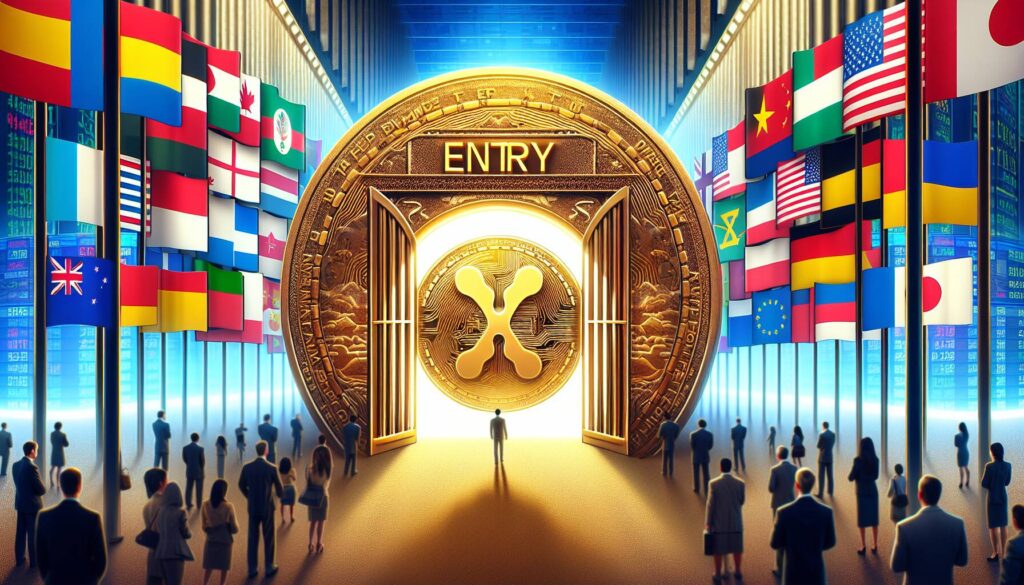The Ethereum network has recently achieved a significant milestone, with transactions reaching a record high amid surging interest in staked ether (ETH). Earlier this week, the average daily transactions on the blockchain peaked at 1.74 million, surpassing the previous record of 1.65 million set in May 2021. This encouraging trend has been bolstered by a favorable regulatory stance from the Securities and Exchange Commission (SEC), which has clarified that certain liquid staking activities may not be deemed securities, provided they adhere to specified conditions.
This positive development is expected to enhance the safety and appeal of liquid staking products for institutions and platforms, potentially driving higher demand for staked tokens such as ETH. Currently, over 36 million ETH, accounting for nearly 30% of the total supply, is locked in staking contracts, according to data from Dune Analytics. This indicates that many holders are opting for yield by sacrificing liquidity as ETH’s value approaches $4,000, a price level not seen since December.
“ETH just being an asset that companies can have as part of their treasury is good and valuable … giving people more options is good,”
Ethereum co-founder Vitalik Buterin recently commented on the rise of public “crypto treasury companies,” which significantly impact how tokens are held and valued. Major stakeholders like BitMine Immersion Technologies and SharpLink Gaming now control substantial quantities of ETH, with holdings valued in the billions, demonstrating a broader institutional interest in the cryptocurrency sector.
Despite the optimism, Buterin cautioned against the risks of excessive leverage, which could lead to adverse market conditions. Nevertheless, ETH has shown resilient growth, climbing 163% from its low of $1,470 in April to nearly $3,909, narrowing the performance gap with competitors such as Bitcoin and Solana. Additionally, reports indicate that the first half of June saw over 500,000 ETH staked, valued at approximately $1.8 billion, further underscoring the growing confidence in the market and the decline in liquid supply.

Ethereum Network Transaction Surge and Its Implications
Key points about the recent developments in the Ethereum network and their potential impact:
- Record High Transactions: Daily transactions on the Ethereum blockchain reached 1.74 million, surpassing the previous record of 1.65 million.
- Increase in Staked Ether: Over 36 million ETH, nearly 30% of the total supply, is currently locked in staking contracts, reflecting a growing trend among holders to prioritize yield over liquidity.
- Regulatory Clarity: The SEC’s clarification that certain liquid staking activities do not constitute securities reduces legal uncertainty and encourages institutional participation.
- Institutional Investment: The rise of public “crypto treasury companies” holding significant amounts of ETH boosts market confidence and demand for the cryptocurrency.
- Price Surge: ETH has rallied 163% since April, signaling increased confidence in its value and narrowing the performance gap with Bitcoin.
- Potential Risks: Ethereum co-founder Vitalik Buterin warned of the dangers of excessive leverage, which could lead to forced liquidations and price declines.
“Giving people more options is good … my guess would be that somehow they turned it into an overleveraged game.” – Vitalik Buterin
The rise in ETH staking and transactions indicates a strong belief in the cryptocurrency’s long-term value, which may lead to greater stability and potential price growth for investors. However, the caution against leveraging underscores the need for sound investment strategies as the market evolves.
Ethereum’s Record Transactions: A Glimpse into the Future of Liquid Staking
The recent surge in Ethereum network transactions has set the stage for a notable shift in the crypto landscape, especially with the announcement from the SEC regarding the classification of liquid staking activities. This regulatory clarity has given Ethereum a competitive edge in the burgeoning market of decentralized finance (DeFi) products. With a seven-day average exceeding 1.74 million transactions, Ethereum is now dethroning previous records, drawing attention away from its closest competitors, notably Bitcoin and Solana.
Competitive Advantages: Ethereum’s rise is undoubtedly bolstered by its institutional acceptance as a viable staking option. By clarifying that staking receipts are not considered securities under certain conditions, the SEC has opened new pathways for institutional investors. This development not only reinforces legal stability but also enhances trust in Ethereum-based liquid staking products. The locking up of over 36 million ETH indicates a strong commitment from holders, favoring a scenario where diminished liquidity could result in price appreciation. Furthermore, the growing involvement of crypto treasury companies signals a maturing market where ETH could see broader adoption and enhanced legitimacy.
Competitive Disadvantages: Despite the positive outlook, there are inherent risks tied to the rising leverage within the staking ecosystem. Vitalik Buterin’s cautionary remarks about potential over-leveraging serve as a vital reminder of the volatility associated with such financial instruments. Additionally, while Ethereum enjoys a current advantage, market dynamics are unpredictable; should regulatory attitudes shift or a major competitor innovate more effectively, it could hamper Ethereum’s growth trajectory.
Who Does This Benefit or Create Problems For: The optimistic scenario primarily benefits institutional investors and crypto treasury firms, allowing them to diversify their portfolios while potentially reaping substantial rewards from staked assets. On the flip side, retail investors could face challenges if over-leveraging leads to destabilizing price corrections. Moreover, competition from other blockchain platforms remains fierce—if they can circumvent similar regulatory hurdles or create more attractive DeFi solutions, Ethereum’s dominance could be challenged. Overall, while the bullish developments surrounding ETH are compelling, they must be approached with caution in a rapidly evolving marketplace.
















